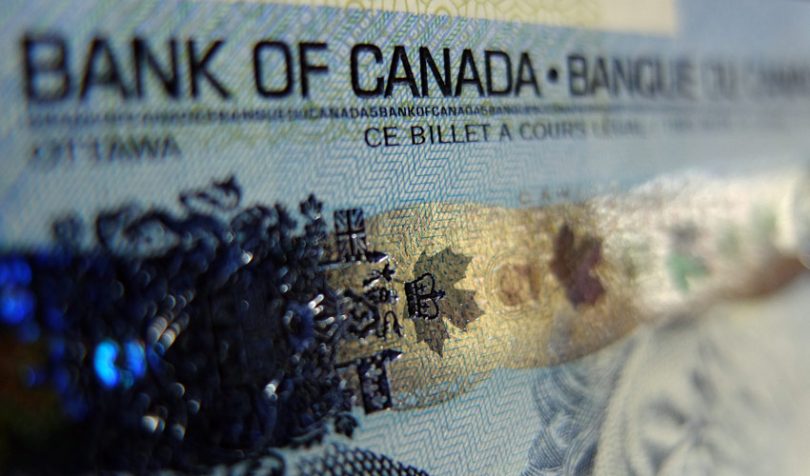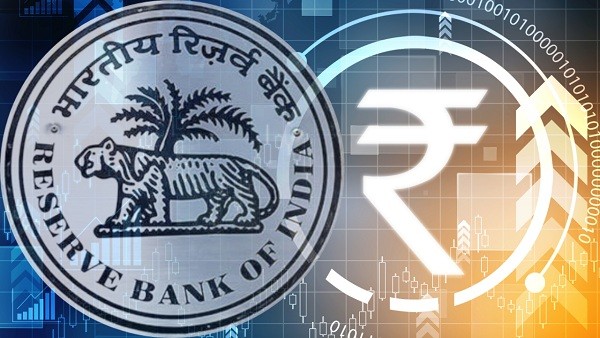The Sinister Growth of Digital Currencies (CBDC) around the World
Way back in 2017 I created a country-by-country guide to the biometric ID control grid that was coming into view even then. In that editorial I noted that “it doesn’t take a Nostradamus to understand where this is all heading: From the cashless society and the biometric ID grid to the cashless biometric grid.”

Well, here we are. The merger of the cashless society and the biometric ID grid is nearing completion. In fact, the current iteration of this control grid agenda is even worse than predicted. Now known as Central Bank Digital Currency, or CBDC, this programmable digital money offers the banksters numerous options, including the ability to combine the cashless society with the biometric ID grid and even a social credit system. If and when CBDCs replace other payment methods, the banksters’ control over society will be unprecedented.
But however closely you might be following the drive toward the CBDC dystopia, you might be missing the forest for the trees. Although each country’s central bankers talk as if they have come up with the idea for a digital currency all by themselves and that there is no international coordination behind the CBDC agenda, nothing could be further from the truth. In fact, as a recent Bank for International Settlements report indicates, 90% of central banks around the world are currently studying the feasibility of issuing their own CBDC.
In the past, I have warned about the coming CBDC nightmare and talked about the numerous ways we can start taking the monetary power back into our own hands. Today, I am going to drive home the point that the coming CBDC prison is truly global in nature by demonstrating that it is not just being put into place in one or two totalitarian countries, but nearly every country in the world.
Only when we recognize how dire the situation is can we hope to motivate communities to implement the survival currencies that will see us through the controlled demolition of the existing monetary order.
Australia
The Reserve Bank of Australia (RBA) has been exploring the possibility of an Australian Central Bank Digital Currency since at least 2019, when its “Innovation Lab” drafted a Submission to the Senate Select Committee on Financial Technology and Regulatory Technology, which states that “the Bank is conducting research on the technological and policy implications of a wholesale CBDC.”
It made good on this threat in November 2020 with the announcement of a partnership between the RBA and Commonwealth Bank, National Australia Bank, Perpetual, and ConsenSys Software to “explore the potential use and implications of a wholesale form of central bank digital currency.” Philip Lowe, governor of the RBA, has publicly expressed skepticism about the need to implement a retail CBDC in Australia, but the door is still open to the possibility.
The Bahamas
The Bahamas became the unlikely location of the world’s first nationwide CBDC when they launched the “Sand Dollar” back in October 2020. The island archipelago—with one of the highest per capita incomes in the Americas and a 90% mobile device penetration rate—was viewed as an ideal laboratory for the CBDC experiment by central bankers and hyped as a harbinger of a “new world economy” by the global financial press.
But the banksters have not been thrilled with the results so far. The IMF told the Central Bank of The Bahamas that it needs to “accelerate its education campaigns and continue strengthening internal capacity and oversight” of the currency.
Brazil
Roberto Campos Neto, president of the Central Bank of Brazil, confirmed that the bank is running a pilot test of its CBDC, the digital real. “This is a way to create currency digitization without creating a break in bank balance sheets,” Neto said at the press conference announcing the pilot’s launch.
Canada
The Bank of Canada (BoC) announced that it had partnered with the Massachusetts Institute of Technology (MIT) to “collaborate on a twelve-month research project on Central Bank Digital Currency.” The project—which the BoC describes as “part of the Bank’s wider research and development agenda on digital currencies and fintech”—will “explore how advanced technologies could affect the potential design of a CBDC.” This will in turn “help inform the Bank of Canada’s research effort into CBDC.”

Chile
Chile’s central bank issued a report on its plans for a future Chilean digital currency. Spouting the usual bankster platitudes about how a CBDC “would contribute to achieving a competitive, innovative and integrated payment system that is inclusive, resilient and protects people’s information,” the review ultimately concludes that “a deeper analysis of the benefits and risks” is in order, and promises (or threatens, depending on your perspective) to issue a new report on the subject later on.
In the meantime, the Chilean Central Bank governor, Rosanna Costa, has said that Chile’s CBDC “should operate both online and offline” and that it should “allow the authorities to trace the transaction afterwards” while paradoxically “safeguarding personal data.”
China
The digital yuan has been in the works for at least five years. It is no surprise, then, that China’s CBDC—already operational in various trials—is seen as one of the most developed CBDC projects in the world and is held up by various Western countries as the bogeyman justifying their own CBDC experimentation (“We can’t let the ChiComs beat us to the punch!”).
As you may know, the People’s Bank of China (PBoC) did a “test rollout” of the currency at the Beijing Olympics, offering athletes, attendees and press the chance to use the new CBDC at the Games. That test was deemed a success, with the PBoC later declaring that the digital yuan was used to make 2 million yuan ($315,000) of payments per day during the event.
Now, in a new move toward full implementation of the Chinese CBDC, three cities across China have declared they will accept the digital yuan for tax payments.
European Union
The EU is currently conducting “in-house experiments” for a digital euro and expects to start working on a prototype soon. As part of its ongoing “research” process, the European Central Bank released a working paper on “The digital economy, privacy, and CBDC.” The paper suggests that a digital euro could strike a happy balance between “inefficient” offline cash transactions that preserve anonymity and “efficient” online bank deposit transactions that do not preserve anonymity.
The best kind of digital currency, the report concludes, is a “CBDC with data-sharing,” a conclusion they arrive at by redefining privacy: “Privacy is not the opposite of sharing—rather it is control over sharing.” Actual Europeans are not buying this self-serving twaddle, but the ECB, unsurprisingly, seems not to be listening to them.
Ghana
The Bank of Ghana was one of the first African countries to announce that it was developing a digital currency. And now, with the release of a design paper for the eCedi—its retail token-based CBDC—it is one step closer to implementing that vision. The bank is currently soliciting feedback on the proposal from the public.
Hong Kong
The Hong Kong Monetary Authority (HKMA) has released a number of studies, white papers, proposals and discussion papers surrounding the topic of CBDCs over the past few years, from the 2019 announcement of Project LionRock-Inthanon (a joint project with the Bank of Thailand to study the application of CBDC to cross-border payments) to the recent “Discussion paper on e-HKD from policy and design perspective.”
This paper invites “views from the public and the industry on key policy and design issues for introducing retail central bank digital currency,” leaving little doubt that the introduction of a digital Hong Kong Dollar is now all-but-inevitable.
India
Indian Finance Minister Nirmala Sitharaman made waves by announcing that the Reserve Bank of India (RBI) would launch a CBDC sometime in the next fiscal year. Let there not be any doubt about the Indian government’s intention to make it on its digital currency threat. Union Minister of State for Electronics and Information Technology Rajeev Chandrasekhar asserted that the digital rupee is a “natural progression” of the digital payment ecosystem.
But for those worried about what life in the coming digital dystopia will be like, relax! RBI Deputy Governor T. Rabi Sankar says the bank “will probably go in for a very careful and calibrated, nuanced manner” as it springs its CBDC trap on the Indian public.

Iran
There’s an old canard in conspiracy realist circles that there are only three central banks on the planet that aren’t owned by the Rothschilds. The exact list of these supposedly independent central banks varies in the telling, but Iran is usually included among them. Well, guess what? The Central Bank of Iran (CBI) is all on board with the CBDC revolution!
Abutaleb Najafi—the head of CBI’s information services company—revealed that, after two years of “continuous work” on the platform, “the infrastructure needed for CBI’s cryptocurrency and now its pilot version is ready.”
Details on the pilot test of the Iranian CBDC are scarce, but Najafi has confirmed that both state-run and private banks in the country will allow customers to open digital wallets for the currency during the trial.
Israel
Generally speaking, central banks are finding CBDCs to be a public relations disaster. In every country they hold “public consultations” about a central bank digital currency and solicit comments from the citizens, but find the overwhelming majority of those responses are negative. As it turns out, people are wary of a government-issued programmable money that could be used to completely exclude them from the financial system itself if they dare engage in activities the government disapproves of.
The Bank of Israel (BoI) has decided to do an end run around this problem by simply declaring (without showing proof) that it has “received public support for its plans to possibly issue a digital shekel on grounds it would help the economy by supporting innovation in the payments system, reducing the amount of cash and bolstering the fintech sector.”
Yes, the banksters actually want you to believe that the majority of Israelis support the idea of a digital shekel because it will reduce the amount of cash. Riiiiiiight. Don’t worry, though. The BoI says it “has still not made a final decision on whether it will issue a digital shekel” even though “all of the responses to the public consultation indicate support for continued research.” Riiiiiiight.
Japan
Bank of Japan (BoJ) Governor Haruhiko Kuroda declared that the BoJ has no plan to issue a digital currency as of yet but that it “will prepare ‘thoroughly’ to respond to changing circumstances that could require it to do so in future.” BoJ Executive Director Shinichi Uchida clarified that the bank would not introduce a digital yen as a means of achieving negative interest rates, as some have warned.
Around the same time, Kazushige Kamiyama, head of the bank’s payment system, pledged that the BoJ would follow Sweden’s slow, cautious approach to CBDC testing before any digital yen is actually implemented.
In a sign that plans for a Japanese CBDC may be further along than publicly acknowledged, however, Kuroda took a moment from fearmongering about decentralized digital assets to state that a CBDC “could be an option to secure a seamless and safe [payment and settlement] infrastructure in Japan.”
Namibia
The Bank of Namibia revealed its plans to launch a CBDC. “We cannot ignore CBDC, it is a reality out there and for that reason, the Bank of Namibia has started researching CBDCs and they very soon will go out with consultations,” the Bank of Namibia Governor Johannes Gawaxab said at a press conference announcing the move, adding that a consultation paper on the plan is nearing completion.
Nigeria
Nigeria is one of only two countries in the world with an official, nationwide CBDC (the other being The Bahamas, mentioned above). The eNaira is a stablecoin minted by the Central Bank of Nigeria, making it a true digital version of the fiat currency.
This CBDC has already been declared a success by the bankster class, with the IMF predicting that the eNaira will be adopted by 90 percent of Nigeria’s population. An upgraded eNaira wallet app will allow Nigerians to “do transactions such as paying for DSTV or electric bills or even paying for flight tickets.”
Russia
The Central Bank of Russia (CBR) has been working on its own CBDC project for years.

The CBR announced the creation of a “pilot group” of 12 banks that will test a version of the digital ruble. According to statements from CBR representatives, citizens will be able to use the CBDC “for purchases, transfers to individuals, firms and the state, tax payments, conversions to foreign currencies in e-wallets and as a store of value.”
Rwanda
Rwanda hopped aboard the CBDC bandwagon, with John Karamuka, the Director of Payment Systems at the National Bank of Rwanda, telling The New Times that the central bank was “studying the possibilities of issuing its own Central Bank Digital Currency in response to global trends in digital currency.”
Central bank Deputy Governor Soraya Hakuziyaremye confirmed that the bank was still in the investigation phase.
Saudi Arabia
In 2019 Saudi central bank (the Saudi Arabian Monetary Authority, or SAMA) announced Project Aber, a partnership with the Central Bank of the United Arab Emirates, to determine whether a new, dual-issued digital currency could be used as a unit of settlement between the two countries.
The final report of that project was released one year later, concluding that “a cross-border dual issued currency was technically viable and that it was possible to design a distributed payment system that offers the two countries significant improvement over centralized payment systems in terms of architectural resilience.”
This led to an admission last October by a SAMA official that the central bank is now actively exploring CBDC as a means to digitize payments, with an ambitious target of having 70% of all payments in the country being conducted digitally by 2030.
South Africa
The country’s central bank, the South African Reserve Bank (SARB), revealed in May 2021 that it had commenced a feasibility study for a general-purpose retail central bank digital currency. In 2022, it announced that it had completed the second phase of a separate trial, known as Project Khokha 2, focusing on the creation of a wholesale central bank digital currency.
Its project report on the trial concluded that the trial was successful and that the next steps should include further testing and collaboration with other countries on the development of a cross-border digital currency.
To that end, the bank announced in September 2021 that it signed up to a pilot program to develop a shared platform to enable cross-border digital currency transactions with Malaysia, Australia and Singapore.
South Korea
The Bank of Korea (BoK) launched a “forward-thinking” digital currency pilot program in August 2021 with the aim of exploring the feasibility of a retail CBDC. Selecting Ground X—the blockchain subsidiary of Kakao, Korea’s largest social network—as its blockchain simulation provider and partnering with Samsung to research cross-border payments to other mobile phones or connected bank accounts, the BoK has reportedly invested 5 billion won in the project. Phase 2 of the trial, testing “payments using CBDC, remittances between countries, and applications of privacy technologies,” is slated to wrap up soon.
Switzerland
In December 2020 the Bank for International Settlements launched Project Helvetia, a “proof-of-concept experiment to integrate tokenised digital assets and central bank money” in conjunction with the Swiss National Bank (SNB). In January 2022, the SNB revealed the results of that experiment: Project Helvetia “has successfully used central bank digital currencies to settle transactions with five different commercial banks.”
The results of the test, we are told, will allow the bank to proceed with some of the most advanced CBDC testing in Europe and “could pave the way for the implementation of a digital currency in Switzerland.”
 Ukraine
Ukraine
Remember Bitt, the Barbadian fintech firm that helped to develop the eNaira for Nigeria? Well, guess what Bitt’s working on now? An electronic hryvnia for Ukraine. That’s right, the Ukrainian government paved the way for a CBDC in 2021 by announcing a test pilot of the digital currency, which was slated to begin in 2022.
No word yet on how Russia’s ongoing “special operations” in the country have affected that plan, but so far there has been no formal announcement that the CBDC idea has been scrapped.
United Kingdom
The Bank of England (BoE) has been looking into the possibility of creating a digital currency in the UK since at least 2015. They are still officially in the “research” phase, with the bank releasing “Responses to the Bank of England’s March 2020 Discussion Paper on CBDC” in June 2021. In November 2021, the BoE released a statement that it will “launch a consultation which will set out their assessment of the case for a UK CBDC” soon.
United States
As you may have heard by now, the Biden White House issued an Executive Order on Ensuring Responsible Development of Digital Assets. Although the order generated a lot of stories about how the administration was clearing the way for the possible introduction of a digital dollar, it should be noted that the Federal Reserve has been actively exploring the concept for some time now; the “go ahead” from Biden was more window dressing than substantial policy shift.
Specifically, the Boston Fed has been collaborating with the Massachusetts Institute of Technology on Project Hamilton—a “multiyear research project to explore the CBDC design space and gain a hands-on understanding of a CBDC’s technical challenges and opportunities”—since the summer of 2020.
The first fruit of that collaboration—a report on Phase 1 of the project—was released in 2022, resulting in new “learnings” about the best way to design a CBDC and clearing the way for Phase 2, which, we are told, “will explore new functionality and alternative technical designs.”
Venezuela
Although The Bahamas and Nigeria are now touted as the first countries to have a national CBDC in place, Venezuela launched its own “cryptocurrency” in 2018.
Of course, it isn’t really a cryptocurrency; it’s a Central Bank Digital Currency. It’s completely centralized, it’s closed source and there’s only one government-run block explorer and one government-issued official wallet. You might also recall that, in a remarkable coincidence, Venezuela introduced its social credit ID card—the “fatherland card”—later that same year.
Well, in case you were wondering, Venezuelans are continuing to be pushed off the digital cliff into technocratic tyranny. In 2022, President Maduro announced that the country’s minimum wage would now be pegged to the digital currency.
Author: James Corbett
yogaesoteric
March 15, 2023
